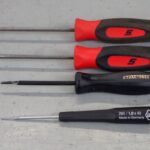Swapping a B18C engine into an older Honda Civic often requires careful consideration of the ECU. Using a B18c Obd2 Ecu presents a streamlined approach compared to older methods. This guide explores various ECU options for your B18C swap, focusing on utilizing an OBD2 setup for a cleaner and more efficient installation.
OBD2 Engine Harness: The Foundation for a Smooth Swap
The key to simplifying your B18C swap lies in using a 96+ USDM Integra OBD2 engine harness. These harnesses are readily available in junkyards and offer a plug-and-play solution for your engine’s electrical connections. Critically, ensure you source an Integra harness, as Civic harnesses utilize a single-piece design incompatible with this swap. The two-piece Integra harness, with separate plugs on the strut towers, mirrors the OBD1 Civic layout, ensuring seamless integration. This approach eliminates the need for alternator, injector, or distributor modifications, unlike older methods relying on OBD1 parts or splicing. Simply connect the OBD2 Integra harness to your OBD1 Civic harness at the strut towers. One extra connector on the OBD2 harness will remain unused; secure it safely away from moving parts.
![]() Integra GSR Engine Bay
Integra GSR Engine Bay
B18C OBD2 ECU Options: Choosing the Right Path
With the harness in place, several ECU options emerge:
1. OBD1 USDM Manual P72: This classic approach involves using an OBD1 USDM manual P72 ECU with your existing Civic harness. However, this requires adding pins for knock sensor, Intake Air Bypass Solenoid (IABs), and VTEC, along with running the necessary wiring. While effective, sourcing a manual P72 has become challenging and expensive.
2. OBD1 USDM Automatic P72 Conversion: A cost-effective alternative involves converting an automatic OBD1 P72 to manual operation. This requires some technical knowledge but offers a significant price advantage over manual P72 ECUs.
3. Chipped P06 or P28: Utilizing a chipped P06 or P28 offers flexibility and tunability. Flashing it with a B18C1 tune and modifying the circuit board for IAB and VTEC control (P28s already have VTEC provisions) allows for custom dyno tuning, maximizing performance. This often proves more cost-effective than sourcing and modifying an OBD1 P72.
4. OBD2 Manual P72 with Conversion Harness: This approach employs a readily available OBD2 manual P72 with an OBD1 to OBD2 conversion harness. This requires bypassing the Crankshaft Fluctuation Sensor (CKF) and adding wiring for the knock sensor, a relatively straightforward process. Additionally, a secondary O2 sensor bung must be added after the catalytic converter. This option is often considered the most straightforward and compliant with emissions regulations.
5. JDM OBD2 P72 with Conversion Harness: The most budget-friendly option utilizes a JDM OBD2 P72 with a corresponding conversion harness. However, this setup might not comply with stricter emissions standards in certain regions like California.
Conclusion: Finding the Optimal B18C OBD2 ECU Solution
Ultimately, the best B18C OBD2 ECU solution depends on your budget, technical skills, and local regulations. While each option presents its own set of advantages and challenges, leveraging an OBD2 engine harness significantly simplifies the swap process. By understanding the nuances of each ECU configuration, you can make an informed decision that best suits your B18C swap project.


